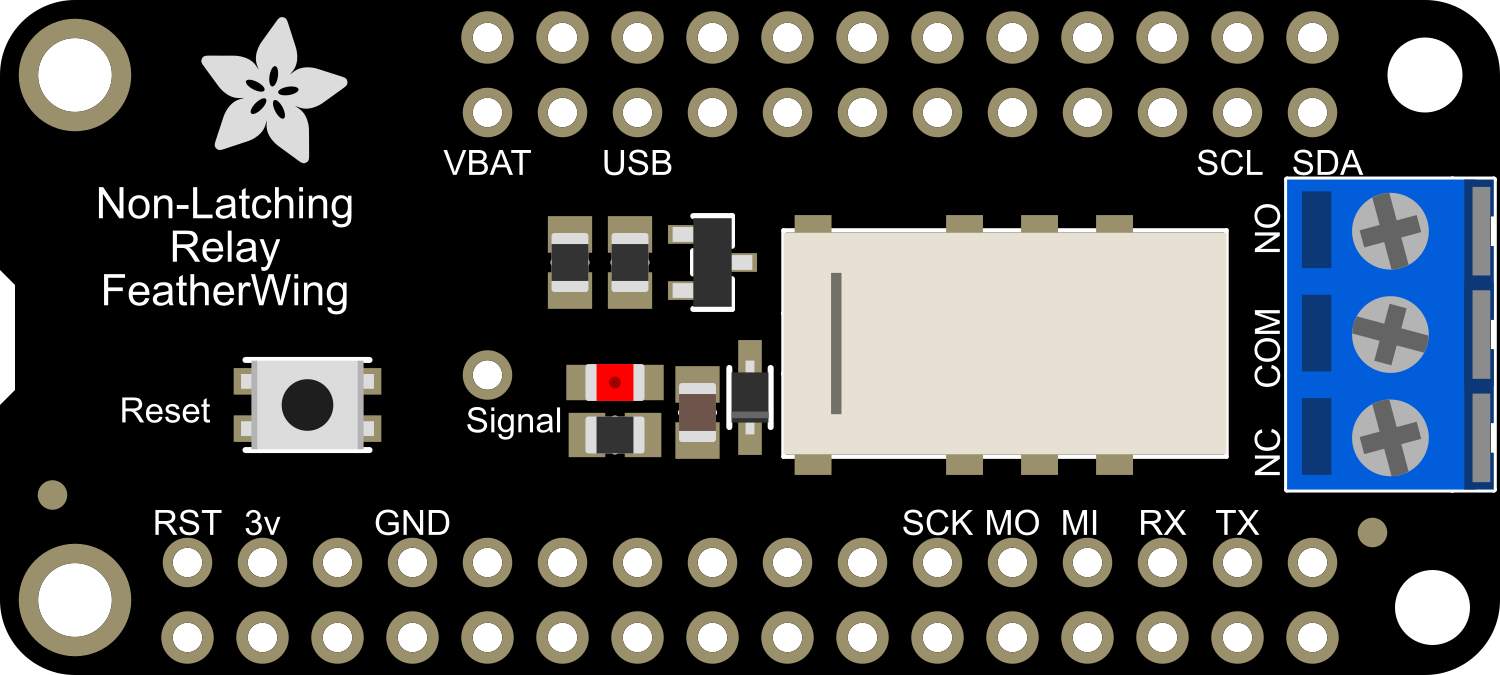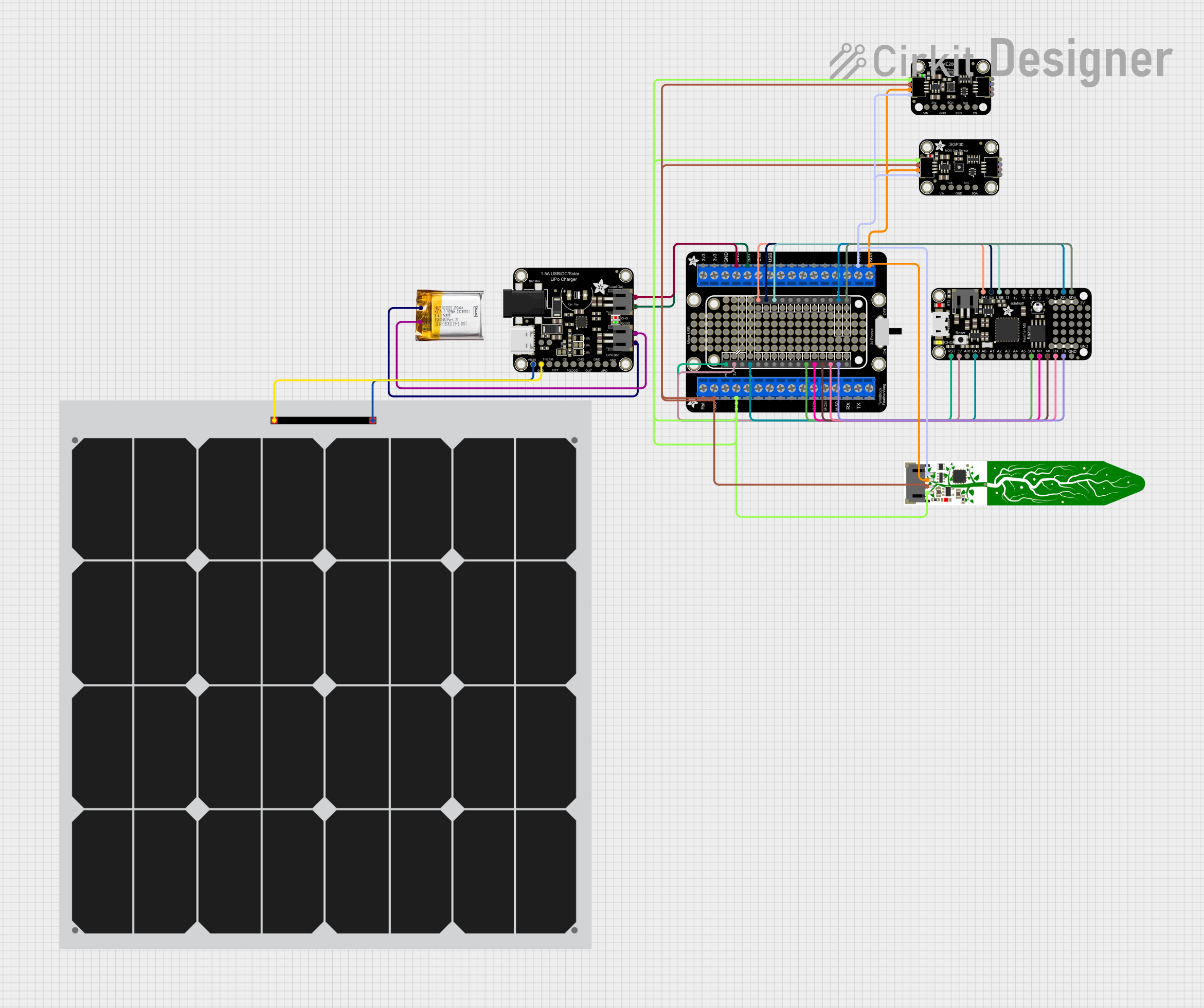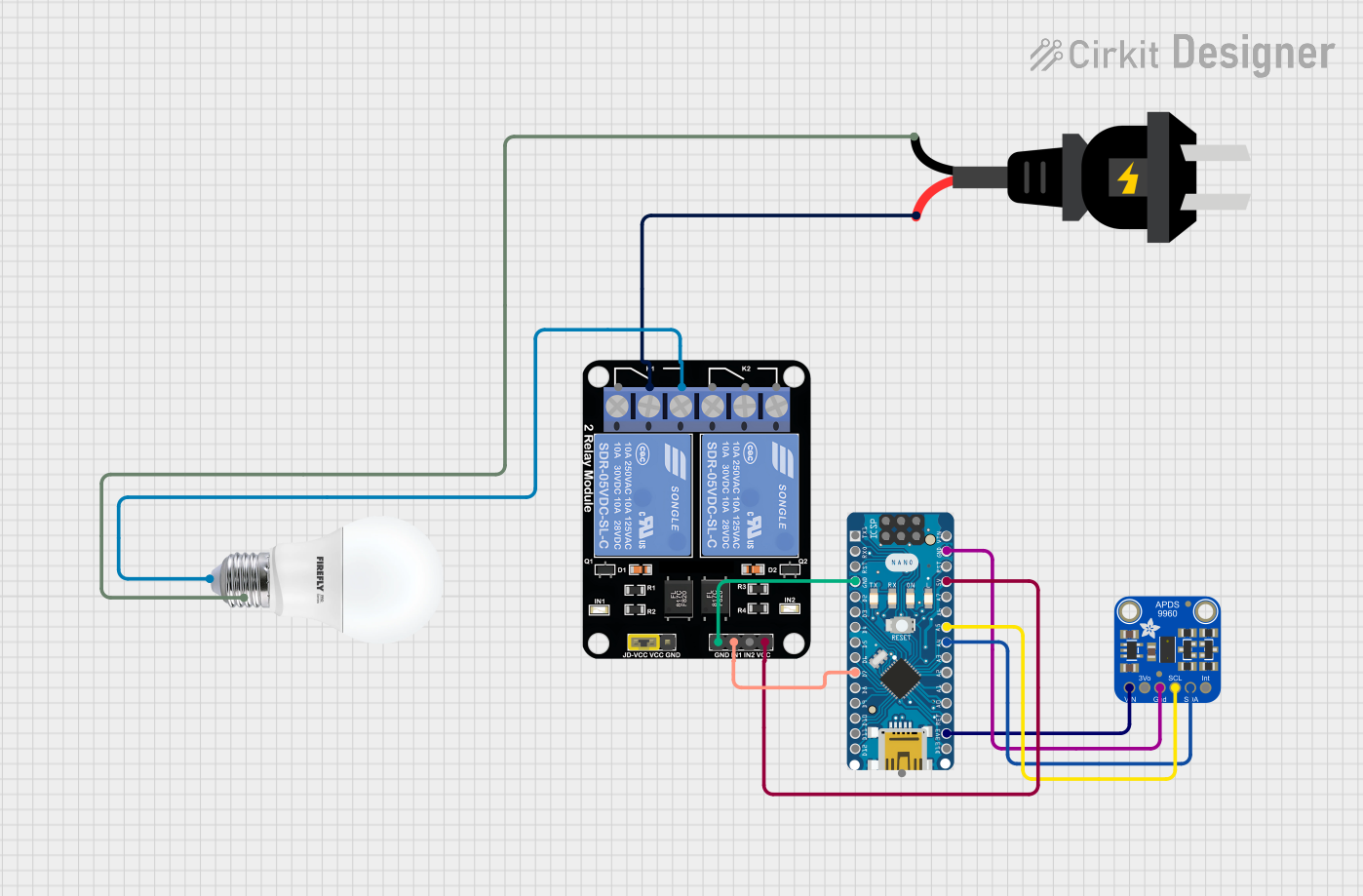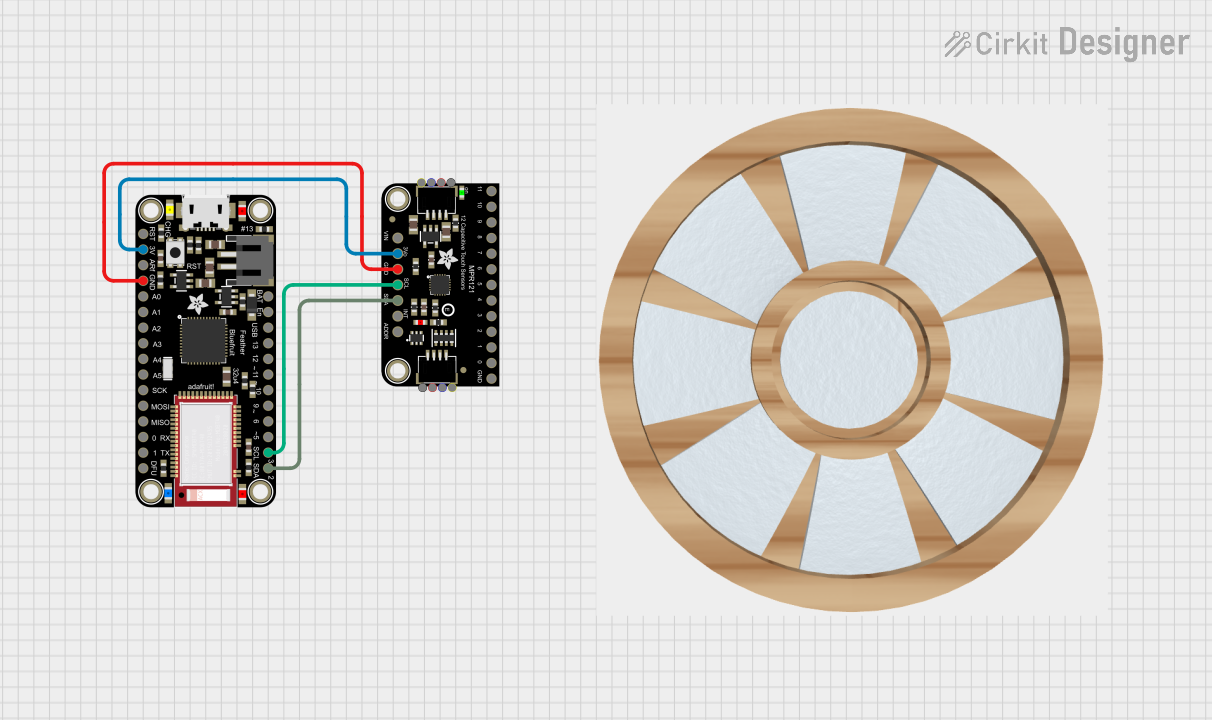
How to Use Adafruit Mini Relay FeatherWing: Examples, Pinouts, and Specs

 Design with Adafruit Mini Relay FeatherWing in Cirkit Designer
Design with Adafruit Mini Relay FeatherWing in Cirkit DesignerIntroduction
The Adafruit Mini Relay FeatherWing is a small, yet powerful relay module that seamlessly integrates with the Adafruit Feather ecosystem. This component allows a low-power microcontroller to switch high-power devices on and off. It's an ideal choice for home automation, IoT projects, and any application where remote control of high-power devices is needed.
Explore Projects Built with Adafruit Mini Relay FeatherWing

 Open Project in Cirkit Designer
Open Project in Cirkit Designer
 Open Project in Cirkit Designer
Open Project in Cirkit Designer
 Open Project in Cirkit Designer
Open Project in Cirkit Designer
 Open Project in Cirkit Designer
Open Project in Cirkit DesignerExplore Projects Built with Adafruit Mini Relay FeatherWing

 Open Project in Cirkit Designer
Open Project in Cirkit Designer
 Open Project in Cirkit Designer
Open Project in Cirkit Designer
 Open Project in Cirkit Designer
Open Project in Cirkit Designer
 Open Project in Cirkit Designer
Open Project in Cirkit DesignerCommon Applications and Use Cases
- Home automation systems
- Remote control of lights, fans, and other appliances
- IoT devices for controlling power to various systems
- Robotics for controlling actuators and larger motors
Technical Specifications
Key Technical Details
- Switching Voltage: Up to 60V DC or 125V AC
- Carrying Current: Up to 1.2A
- Coil Voltage: 3V DC
- Contact Resistance: 100mΩ max
- Operate Time: 10ms max
- Release Time: 5ms max
Pin Configuration and Descriptions
| Pin Number | Name | Description |
|---|---|---|
| 1 | GND | Ground connection for the relay coil |
| 2 | Sig | Digital signal input to control the relay |
| 3 | NC | Normally Closed contact; connected to COM when relay is not active |
| 4 | NO | Normally Open contact; connected to COM when relay is active |
| 5 | COM | Common connection for the switching circuit |
| 6 | VCC | Power supply for the relay coil (3.3V - 5V) |
Usage Instructions
How to Use the Component in a Circuit
Power Connections:
- Connect the VCC pin to a 3.3V or 5V power supply.
- Connect the GND pin to the ground of the power supply.
Signal Connection:
- Connect the Sig pin to a digital output pin on the Feather board.
Load Connections:
- Connect the device you wish to control between the COM and NO or NC pins, depending on whether you want the device to be on when the relay is activated (NO) or off (NC).
Important Considerations and Best Practices
- Ensure the power supply for the relay coil matches the voltage requirements (3.3V - 5V).
- Do not exceed the maximum switching voltage and current ratings of the relay.
- Use a flyback diode when switching inductive loads to prevent back EMF damage.
- Avoid placing the relay near sensitive electronic components to prevent interference.
- Always disconnect power before making or changing connections.
Example Code for Arduino UNO
// Define the pin connected to the Relay FeatherWing
const int relayPin = 5;
void setup() {
// Set the relay pin as an output
pinMode(relayPin, OUTPUT);
}
void loop() {
// Turn the relay on
digitalWrite(relayPin, HIGH);
delay(1000); // Wait for 1 second
// Turn the relay off
digitalWrite(relayPin, LOW);
delay(1000); // Wait for 1 second
}
Troubleshooting and FAQs
Common Issues
- Relay not switching: Ensure the Sig pin is receiving the correct digital signal and that the power supply is properly connected.
- Intermittent operation: Check for loose connections and ensure the power supply is stable.
- Clicking sound but no switching: Verify that the load does not exceed the relay's maximum ratings.
Solutions and Tips for Troubleshooting
- Double-check wiring against the pin configuration table.
- Use a multimeter to verify the presence of voltage at the relay coil and the continuity of the relay contacts.
- Ensure the code uploaded to the Feather board is correctly setting the relayPin as an output and toggling its state.
FAQs
Q: Can I control the relay with a 3.3V signal? A: Yes, the relay can be controlled with a 3.3V signal, making it compatible with most Feather boards.
Q: What is the maximum current the relay can switch? A: The relay can switch currents up to 1.2A for DC or AC loads.
Q: Can I use multiple Relay FeatherWings together? A: Yes, you can stack multiple Relay FeatherWings, but ensure each relay is controlled by a separate digital output pin.
Q: Is there an indicator to show when the relay is active? A: Yes, there is an LED on the board that lights up when the relay is activated.
For further assistance, consult the Adafruit support forums or the product's official documentation.